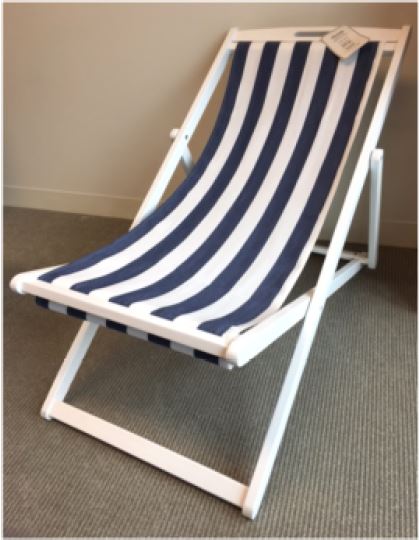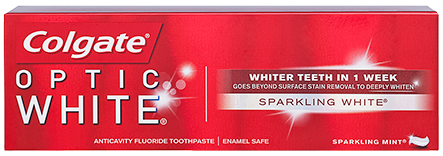Author Archive
Chair Recalls Could Lead to Injuries
June 15th, 2016. By LucyC
 Couple of chair recalls caught my eye recently—collapsible chairs collapsing—unintentionally. Uh, not so good really. Especially, if you have them round the bar.
Couple of chair recalls caught my eye recently—collapsible chairs collapsing—unintentionally. Uh, not so good really. Especially, if you have them round the bar.
The first one is the Sadie Chair and Barstool, which, it seems, has dodgy legs and screws (Nope—please don’t go there…). Apparently, “The back leg of the chairs can bend and the seat tabs or screws on the seat can loosen. When loose, pinch points between the seat and steel frame are created, posing a risk of injury.”

Image: cpsc.gov
One can only imagine that with the benefit of a few too many martinis this could get a bit confusing, in addition to being injurious. There are you are, sitting next to your would-be new romance thinking, ‘Pinch me, I’m dreaming!’ over how lucky your barstool choice was when…YEOW! Pinched indeed you were! From the defective chair you’re sitting in. Great. That would certainly change the mood a bit, and perhaps the rest of the evening’s plans if it meant trading your barstool for an ER gurney.
Yes, the Grand Rapids Chair company has reportedly received three reports of finger injuries including a finger laceration, bruise and fracture.
According to the recall, about 2,300 chairs are included—specifically, Grand Rapids Chair Company Sadie chairs (model 837) and barstools (model 837S). The model number is printed on the underside of the chair, on the care and use instruction label. The chairs have a seat height of 18.5” and overall width of 22.5”, and the barstools have a seat height of 30” and overall width of 22.5”. The Sadie chairs have a steel frame of various colors with a wood seat base and seatback.
Just in case you hadn’t figured this out, “Consumers should immediately stop using these recalled chairs and barstools and contact Grand Rapids Chair Company to schedule a free repair.”

Image: cpsc.gov
The second recall is involves around 5,200 T.J. Maxx and Marshalls foldable weatherproof lounge chairs. Weatherproof but not person-proof, apparently. Fabulous. Who tests these things? Do they test these things?
Once again, you find yourself enjoying a pleasant sit down, when BAMMO! goes the barbeque and down to the floor you go. Maybe that’s why it was selling at the store for $39.99 rather than at its “Compare At” price of $70.00. But of course that’s just conjecture…
Apparently, TJX has received 15 reports of injuries from collapsing chairs. Injuries included back and tailbone injuries, one report of a fractured finger, three reports of stitches to fingers and reports of cut, bruised or swollen fingers. Really, who would have thought you get into that much trouble just from sitting down?
On this recall, consumers are being advised to” immediately stop using the recalled foldable chairs”—hello!—“and return them to any T.J. Maxx or Marshalls store for a full refund.”
Here’s the skinny—the chairs are made of an acacia wood frame and striped fabric in two styles: a natural oiled wood frame with red and white stripe fabric or a white gloss frame with blue and white stripe fabric. The chairs measure about 30 inches high by 42 inches long when unfolded. The style name, “Foldable Chair Solid Acacia Wood – Stripe Fabric – Weatherproof” is printed on the hang tag attached to the chair. The chairs sold at T.J. Maxx and Marshalls stores nationwide during March 2016 for about $40.
Time to invest in a picnic blanket I think…
Lawsuit: Being “Natural” Makes Cigarettes Better?
June 7th, 2016. By LucyC
 Every once in a while you come across something and just have to give your head a shake. Recently, a lawsuit—a proposed consumer fraud class action—was filed against a cigarette manufacturer over allegations the product is not as “healthy” as advertised. Ok. Who’s smoking what here?
Every once in a while you come across something and just have to give your head a shake. Recently, a lawsuit—a proposed consumer fraud class action—was filed against a cigarette manufacturer over allegations the product is not as “healthy” as advertised. Ok. Who’s smoking what here?
One Scott Johnson, named plaintiff, of somewhere, Florida, has taken it upon himself to file the lawsuit and is apparently willing to represent others who also feel they have been misinformed as to the health effects of Natural American Spirit cigarettes. How thoughtful. Or not. And note, this is not the first time Natural American Spirit cigs have been on the receiving end of raised eyebrows and push back–anti-tobacco groups have tried to ensure these cigarettes are in the FDA’s crosshairs.
But, a short period of serious reflection—or a Google search—would surely raise some doubt in the consumer’s brain, if not lay plain the fact that cigarettes are not healthy, at all. Never have been. Never will be, regardless of how natural or unnatural they claim to be. And there’s half a century’s worth of science to prove it.
On the other hand, maybe that’s not what the consumer fraud lawsuit is about. Perhaps, it’s about making an example of the company—outing them because they’re allegedly being dishonest—they are, in the words of the lawsuit, guilty of unjust enrichment, violation of the Florida Deceptive and Unfair Trade Practices Act, and violation of similar statutes in other states. In other words, making suckers out their customers.
However, in the interest of honesty, unless you’ve lived in a galaxy far, far away, for the past half a century, it would be difficult, although possibly not impossible, to remain unaware of the legion of data on the adverse health effects of cigarettes.
Notably, the plaintiff steers clear of the tar and nicotine issue, instead focusing on claims that the labeling for Natural American Spirit cigarettes states that they are “natural,” “additive-free,” “organic” and as an “unadulterated tobacco product.” And therein lies the rub.
According to the complaint, these terms are intended to imply that American Spirits are purer, healthier and safer than other cigarettes and that they present a reduced risk of tobacco-related disease. (Is that even possible?)
Johnson goes on to claim in the proposed suit that there is no scientific evidence to suggest American Spirits are any safer or healthier than other cigarettes. (That would be a difficult, if not impossible thing to prove. )
To strengthen his claim, Johnston states that research conducted by Santa Fe’s competitors has shown that American Spirits are not free of additives. Hey—everything has a shelf life—even carcinogens.
As a result, the complaint states, purchasers of American Spirits paid a premium for cigarettes that are no healthier than other lower-cost cigarettes. In other words, you are just as likely to become ill from smoking American Spirit Cigarettes as any other brand—but you may have saved a few pennies in the process. This begs the question, would they have paid more for a premium brand of cigarettes, knowing the health risks are likely similar?
Johnston, and any other interested plaintiffs, want their day in court, in the hopes of collecting actual and punitive damages, etc. Be interesting to see what happens—what the tolerance level is for willful ignorance—and deceptive marketing. A marriage made in lawsuit heaven.
FYI—the case is US District Court for the Southern District of Florida Fort Pierce Division Case number 1:16-CV-00474-JB-LF
Does Colgate Optic White Really Make Teeth Whiter?
May 23rd, 2016. By LucyC
 How white is white? Now there’s a burning question—one I’m sure has kept people awake for decades. And it is now set to be an issue, possibly the central issue, in a consumer fraud case recently filed against Colgate.
How white is white? Now there’s a burning question—one I’m sure has kept people awake for decades. And it is now set to be an issue, possibly the central issue, in a consumer fraud case recently filed against Colgate.
Colgate Palmolive, allegedly, has been making claims that its optic white platinum toothpaste “Goes beyond surface stain removal to deeply whiten” teeth. And, as if that weren’t enough, the toothpaste also “Deeply whitens more than three shades.” Three shades? More like 50 shades (of grey area). And just to be technical as we’re on the subject—a shade can refer to the darkening of a color—so I would think that “shades of white” may not actually be the precise meaning Colgate had in mind—but who knows.
In any event, color theory aside, Lori Canale isn’t happy with any of the shades of white she has allegedly failed to manifest using said toothpaste. So she’s filed a class action. But I’m betting this won’t be an easy one.
Aside from the difficulty in defining the extremely vague claim “three shades of white”, Canale alleges in the Colgate Optic White Toothpaste lawsuit that the toothpaste isn’t up to the job no matter what your definition—because it is 1 percent hydrogen peroxide, which is not a large enough amount of hydrogen peroxide to do the job. Further, the product is not in contact with teeth for a long enough time to do what the company claims it does.
So, what’s needed is more H2O2 and more time? But then how much is too much? Too much would almost certainly end up a lawsuit as well.
But we’re still back to the central question—just what “shades of white” are at issue here? A trip to the nearest house paint section at your local DIY store is enough to clearly make this point. Are we talking Cloud white, Duck white, Titanium white, warm white, cool white, off white, gray white, bright white—and then there are decorator whites—you know – Lily white, Whisp white, Honeycomb white, Great white (?), China white, Cotton white—should I go on? OMG. And we haven’t even touched on lighting! Think black lights—cast your mind back to your best friend’s 1970’s bedroom (at the risk of dating myself) that harboured the secret “black light”. Wow—turn that baby on and in addition to lighting up all the Who and Led Zeppelin posters—you could blind everyone in the room if you smiled. Light is very important. There’s another shade—Dazzling white—or maybe Knock-out white.
One thing is certain–no one seems to want yellow—and grey is definitely out.
But I’m not sure how one would prove that three shades of white is not achievable with this toothpaste—as no baseline has even been established. What color are you starting with—or should we use the term shade? Or tint? And is there such a thing as too white? Not to mention, the name “Optic”—meaning “of or relating to the eye or vision”—makes this kind of an “eye of the beholder” situation, no? So it’s probably off to a lab somewhere that this lawsuit will be heading as there’s just too much variability in everyone’s teeth and every possible shade of white.
This whole lawsuit takes me back to a dinner I was at once. I was sitting across the table from a news anchorwoman. And the entire time I couldn’t take my eyes of her teeth. I didn’t hear a word she said, and I have no idea how I got through the conversation, because all I could see were her teeth—and all I could think was “who has teeth that white?” I couldn’t tell you what shade of white her teeth were. And—important point—we were in restaurant lighting. Think bistro—dinner—soft lighting.
I’m sure this is a very vexing problem. Who doesn’t want white teeth? But perhaps the most important thing is that you have teeth. After that—it’s all gravy—brown gravy. Just don’t forget to brush!
We’ll be keeping an eye on this one—it’s US District Court for the Southern District of New York Case number 7:16-CV-03308-CS.
NFL Players Cry Foul over Settlement Liens
May 5th, 2016. By LucyC
 Attorneys behaving badly—or is it a case of consumer fraud?—or maybe it’s all fiction to begin with. Whatever it may be, it’s certainly an interesting twist on the client-attorney relationship.
Attorneys behaving badly—or is it a case of consumer fraud?—or maybe it’s all fiction to begin with. Whatever it may be, it’s certainly an interesting twist on the client-attorney relationship.
Remember the massive concussion lawsuit filed by former National Football League (NFL) footballers against the league—which recently resulted in a massive $1 billion settlement? Well, the players are now suing their attorneys over liens placed or intended to be placed on the players’ individual cuts of the settlement.
Wow. What happened to sending an invoice?
The backstory—short version—in April the $1 billion settlement was upheld against the NFL. Approved by the 3rd U.S. Circuit Court of Appeals, the revised settlement deal will resolve thousands of lawsuits brought against the league, as well as covering over 20,000 retired NFL players for the next 65 years. According to estimates by the NFL, 6,000 former players, or nearly three in 10, could develop Alzheimer’s disease or moderate dementia.
In the lawsuit filed by Gale Sayers, Lem Barney, Thomas Skladany, Thomas Vaughn, Jerry Rush, Kenneth Callicutt and Eric Hipple, (FYI—Sayers and Barney are members of the Pro Football Hall of Fame) against their former attorneys, Hausfeld; Zimmerman Reed; Locks Law Firm; Bondurant Mixson & Elmore; and Pope McGlamry, the plaintiffs have asked the court to rule that their former law firms not be entitled to liens on the players’ recovery.
The players claim they terminated their respective firms’ handling of their individual cases because they weren’t happy with the representation they were receiving. Here’s the possible consumer fraud angle—not getting the goods as advertised. But how do you measure that?
According to the lawsuit, “Defendant law firms’ efforts on plaintiffs’ cases have been expended exclusively in furtherance of the NFL concussion class action litigation for which some of defendant law firms will be richly compensated.” …”But, based on information and belief, defendant law firms have made no substantive efforts in furtherance of plaintiffs’ individual monetary award claims under the settlement agreement, which is why plaintiffs terminated the relationships with the defendant firms.” In plain English—their eyes were on the big payday. Not exactly surprising.
Of course, the lawyers have a different version of events. Managing partner of Locks Law Firm, Michael Leh, said in a statement, “Locks Law Firm had not asserted an attorneys’ lien against the former player in this complaint who we represented; although we did do work on the case we would never assert a claim for fees that was not justified.”
“No law firm represents more individual former players in this litigation than we do,” he continued, “and no other firm has spent more time, effort and money than Locks Law Firm in order to obtain the maximum award possible for each of our individual clients both under the terms of the settlement agreement and through every other available avenue.”
No word from the other law firms as of yet. Don’t know if anyone will make an end-run on this one.
Where do you go after you Die? Family Sues for Answer
April 13th, 2016. By LucyC
 What’s that expression—don’t shoot the messenger? What about exceptional circumstances? Ok—maybe hire a lawyer instead—but you know where we’re going with this. Just for a moment, imagine getting a phone call from a funeral home you have hired for transportation purposes only, that goes something like “So sorry, your mother’s remains were accidentally cremated, and actually, we can’t find them now.”
What’s that expression—don’t shoot the messenger? What about exceptional circumstances? Ok—maybe hire a lawyer instead—but you know where we’re going with this. Just for a moment, imagine getting a phone call from a funeral home you have hired for transportation purposes only, that goes something like “So sorry, your mother’s remains were accidentally cremated, and actually, we can’t find them now.”
Yup. It really happened. A funeral home in Manhattan mistakenly cremated the remains of Consuelo Rivera, a New Jersey resident, and then lost the ashes, according to her family, who yes, filed a lawsuit. Surprised? But it gets worse—you must have known that it would.
The bungling is on par with a Marx Brothers’ film, but this script ain’t funny.
The short version, according to Michael Lamonsoff, the family’s lawyer, goes like this: Mrs. Rivera passed away on March 22 and her body was taken to Biondi Funeral Home in Nutley, NJ. In preparation for burial. So far so good. However, the two sons were not impressed with the service they were receiving and requested that their mother’s body (key point here) be taken to a funeral home in Brooklyn, the RG Ortiz Funeral Home, for preparation. A relatively straight forward request, one would think.
Not so much. The Rivera brothers hired another funeral service company (so we’re now at three), First Avenue Funeral Services of Manhattan, to transport their deceased mother from Biondi (the first funeral home) to RG Ortiz (the second funeral home).
Apparently, there was a delay in transportation—who knows what that means—and the third company—First Avenue—ended up keeping Mrs. Rivera. Still with me?
Then came the phone call, March 27, from a staff person at First Avenue, telling Mrs. Rivera’s relatives that they had accidentally cremated Mrs. Rivera. And, according to the lawsuit, her family was also told that First Avenue could not find the urn containing her ashes. Nice one boys.
Not sure how one would react to that news. But now the hunt was on.
Rivera’s sons, absolutely desperate to find their mother, began searching. However, when they thought they had found her at the Rosemont Crematorium in Elizabeth, NJ, the director of the crematorium, in fact, gave them an urn containing someone else. The wrong urn. OMG. How the heck are you going to know who’s in the urn? Not to be dark here but one set of ashes have to look pretty much like the next.
To continue, following that rather major set-back, the boys began the search anew. But the pattern of mistakes continued. Once again, the Rivera’s thought they had found their mother’s remains at First Manhattan (the third funeral home) but that information also proved incorrect.
According to their attorney, Lamonsoff, the sons were given the wrong urn. Again. Seriously. More than a week later, Rivera’s remains were still missing, the attorney told the New York Post recently.
“To date the remains of Consuelo Rivera continue to be missing and a heartbroken and bewildered family is unable to say their final goodbyes,” Lamonsoff said in a statement.
Rivera’s sons, Emilio and Juan Irizarry, who by this point must be quite traumatized by these events, are quite understandably suing all three funeral firms for damages, citing extreme negligence. I would think, however, that bungling on this level puts a whole new spin on “extreme negligence,” not to mention, “rest in peace.”
© 3drenderings | Dreamstime.com – Marble urn for ashes
Archive by Category
- Accidents (24)
- Airlines (9)
- Asbestos Mesothelioma (262)
- Automotive (25)
- Celebrity (14)
- Class Action (84)
- Complaints/Comments (15)
- Consumer Fraud (84)
- Contest (2)
- Court of Public Opinion (5)
- Crazy Sh*t Lawyers See (61)
- Criminal Law (4)
- Defective Products (111)
- DePuy ASR Hip Recall (2)
- Discrimination (22)
- Drugs/Medical (248)
- Elder Care Abuse (4)
- Emerging Issues (462)
- Employment (54)
- Environment (52)
- Financial (28)
- Food Illness (15)
- Human/Civil Rights (4)
- Insecurities (5)
- Insurance (16)
- Intellectual Property (16)
- Internet/E-commerce (19)
- lawsuits (161)
- Lawyers (20)
- Lawyers Giving Back (43)
- Lex Levity (10)
- Personal Injury (106)
- Pleading Ignorance (53)
- Real Estate (2)
- Recall (6)
- Scam (3)
- Securities (13)
- Settlement (81)
- Tort Reform (2)
- Totally Tortelicious (81)
- Veterans (11)
- Whistleblower (9)